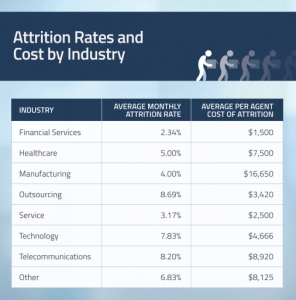One-quarter of retailers are generating more than $100 million in revenue from their media networks.
Retail media networks are a hot new thing that’s been around for decades. Its roots go back to brands putting ads on store end caps and paying for placement in retailers’ weekly fliers. But, like everything else in marketing, digital took it into a whole different realm.
Simply put, these networks are a platform which lets brands buy advertising on a retailer’s website, apps and other digital properties, including in-store. More importantly, it also lets them run ads on the open web. Retailers that partner with media companies offer brands the opportunity to expand their reach and improve targeting with the use of in-depth shopper data.
What was once a staid addition to marketing campaigns is now a major focus of brands and retailers.
“We want to create more meaningful intersections between our partners and customers,” says Charlene Charles, head of Dollar General’s DG Media Network Operations. “A brand wants to engage with the customer and give them the best cereal or the best personal care item. We want to reach those hard to reach customers in rural America … making sure that we get [them the] brands and products they want, need and desire. It’s really core to our overall pursuit to serve our communities and our customers, but now we’re doing that through a different channel.”
What makes retail media networks valuable?
Dollar General is a great example of what makes a retail media network valuable. It has a deep relationship with consumers who are difficult to reach through other channels. Of the chain’s more than 18,000 stores, 75% serve markets of 20,000 or fewer people. Because of this, it can provide brands with hard-to-get, first-person consumer data. That’s the kind of unique reach brands want.
“When you look at impression volume and delivery what ends up happening is it’s concentrated in major mass-market urban areas,” says Charles. “However you’re not capturing everyone, right? And because we have identified and can reach 90% of our customers through paid media, we are extending reach that’s unduplicated in rural areas.”
In return, DG gets to provide customers with offers they want to see and discounts they might otherwise miss – further strengthening the relationship. It also gets one other thing: money, a lot of money.
While DG doesn’t break out how much they are earning from its media network, it’s likely quite a bit. Walmart’s network, Walmart Connect, is responsible for 12% of the company’s profits. One-quarter of retailers are generating more than $ 100 million in revenue from their media networks, according to Forrester. That’s made these networks a game changer for many retailers – and a potential lifeline in a worsening economy. Retail profit margins tend to be slim – in the 3% to 4% range. The margin on ad sales is usually 70% to 90%, according to BCG. And sales are very good.
According to MediaRadar:
- In the eight months from May 1, 2021 to the end of January in 2022, more than 23,500 companies bought ads on retail media networks.
- 14% bought ads every month; the retention rate from December to January was 59%.
- 24% of the companies advertising in January 2022 were first-time buyers.
Furthermore, the retail media market will grow by 25% per year to $ 100 billion over the next five years and will account for over 25% of total digital media spending by 2026, according to BCG. Also important: This is new revenue for retailers. Per BCG: 60% to 70% of the projected $ 100 billion in 2026 retail media revenue will be net new spending over and above historical trade dollars.
What’s in it for brands
The value of retail media networks to brands goes well beyond first-party data. They also make it easier to tie ad spend to sales. An online ad and the point of sale are so close together, it’s much easier to connect a purchase to a specific ad and action. This provides essential data for strategic decisions like resource allocation. It also provides essential data in the never-ending quest for ROI.
That said, not everyone will strike gold with this. For retailers, these networks require technological infrastructure and expertise few have.
“If you’re a retailer and want to enter this space, you have to really understand that it’s crowded now,” says Matt Feczko, vice president for product management at Epsilon, a retail media solution provider. “It’s very competitive and you have to ask yourself, ‘Do I have the data to do this? Do I even have the people or technology?’”
For brands there are several different challenges. One is integrating with a new media network: How do they do ad sales? Is it something your existing tech can easily work with? Another is being sure the retailer’s data is what you need. Does it have a unique reach? Does it have the depth and granularity that will make it useful?
Retail media networks have turned retailers into ad moguls. That’s a huge change and nobody yet understands all the implications of it. They are also spurring a lot of innovation as marketers rush to capitalize on them. While much of that is online, it’s also happening with in-store advertising.
“It used to be that in-store was just printed things, like end caps where it’s just a big standing thing,” says Feczko “Now it’s moving into this interesting digital space like cooler screens.”
Earlier this year, Walgreens introduced a display screen for coolers which shows an exact digital image of what is in the cooler – as you can with clear glass. However, it also runs an ad or offer for a specific brand while the customer is deciding what to buy.
If there’s a downside to the popularity of retail media networks, it’s the chance that they could grow in number to the point where the amount of inventory outstrips demand. Currently, however, they are proving a boon for marketers and retailers alike.
The post Why we care about retail media networks appeared first on MarTech.
MarTech(14)





